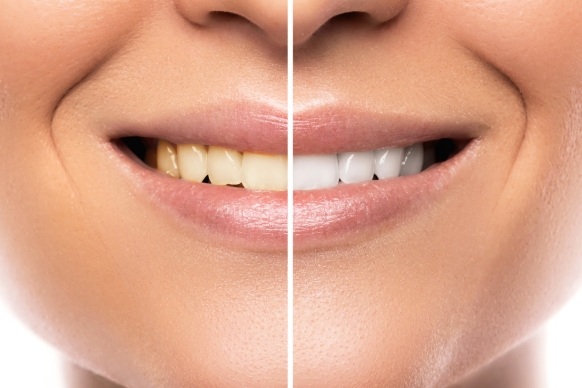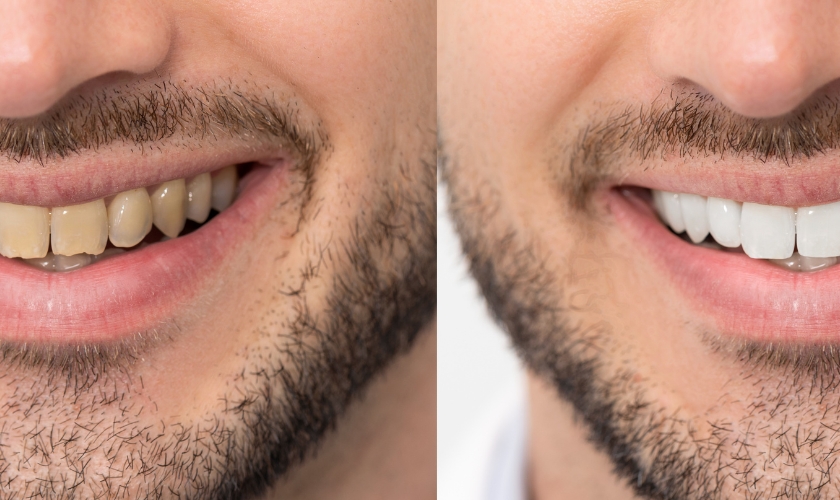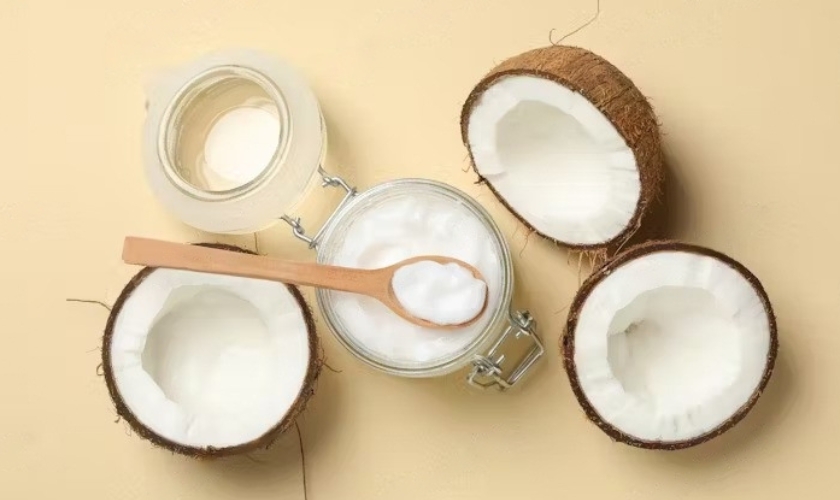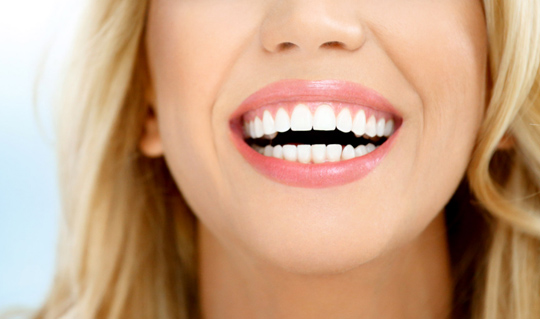How does teeth whitening work?

Effects of Chewing Gum on Your Teeth
January 22, 2024
What are the best options for replacing a missing tooth, implants, bridges, or dentures?
February 5, 2024A variety of techniques are referred to as “teeth whitening” to enhance the appearance of a person’s natural teeth. Teeth can be made whiter by bleaching, sanding down stains, UV light therapy, and other methods.
There are numerous teeth-whitening solutions on the market, and you can experiment at home with various methods. The dentist’s office is another place where you can obtain teeth whitening.
Tooth sensitivity and gum irritation are two undesirable side effects of some teeth-whitening procedures. Let’s examine the principles of teeth whitening, safe procedures, and things to be aware of regarding potential adverse effects.
Types of teeth stains
To achieve effective teeth whitening, it is crucial to select a whitening method that takes into account the type of stains present on your teeth. If you are concerned about both intrinsic and extrinsic staining (refer to the information below), you will likely need to opt for a whitening method that safely addresses each type of staining.
If you are uncertain about the nature of the stains on your teeth, it is recommended to seek guidance from a professional like Dr. Olivia Cui, who specializes in teeth whitening in Olds, AB. A dentist can evaluate the specific type of stains affecting your teeth and provide personalized advice on the most effective treatment options to attain optimal results.
Intrinsic stains
Intrinsic stains are those that are found within the enamel of your teeth. Sometimes when you’re a child, intrinsic staining is evident even before your teeth grow from your gums.
The use of antibiotics, prolonged exposure to fluoride, and thinning tooth enamel with age can all cause these stains. According to a 2014 research by Trusted Source, intrinsic staining may occasionally even be genetic.
Extrinsic stains
External stains are located on the exterior of your teeth. These result from exposure to substances in the environment that stain the enamel on your teeth. This kind of discoloration can be brought on by smoking, coffee, and artificial food coloring.
According to the aforementioned 2014 study, extrinsic stains and intrinsic stains may both be connected to antibiotic use.
Teeth whitening options
Teeth can be whitened using various methods, such as toothpaste with whitening agents or professional teeth whitening sessions supervised by a dentist. Some products are designed to eliminate external stains from teeth, while others lighten both internal and external stains through bleaching.
Many over-the-counter and in-office treatments utilize hydrogen peroxide to reduce stains on teeth, with carbamide peroxide also being commonly used. It is crucial to follow the instructions when using teeth whitening products, as these chemicals can be harsh and cause irritation when used in high concentrations.
If you experience sensitivity after using whitening treatments at home or the dentist, it is important to discuss this with your dentist. If a whitening product leads to tooth pain, gum redness, or bleeding, it should be discontinued and your dentist should be consulted.
Home whitening kits
Home teeth whitening kits come in various forms, such as gels, pastes, or adhesive strips. Some kits require applying a whitening agent directly to the teeth using a brush, while others involve covering the teeth with a whitening substance before placing a mouthguard.
In certain kits, a mouthguard may include a heat lamp, blue light, or UV light, although their impact on the gel’s effectiveness is unclear, as suggested by a small 2021 study. The mouthguard serves to enhance gel absorption and minimize contact with the gums. Approved by the ADA for at-home use, gels with 10 percent carbamide can be used in overnight mouthguards, as per 2019 research.
While the active ingredients in home kits are less concentrated than those in a dentist’s office, consistent daily use over several weeks is required for visible results, typically advertised within 2 to 4 weeks.
Whitening at the dentist’s office
Higher doses of active chemicals are used in teeth bleaching procedures at dentist offices to produce noticeable results faster.
According to a 2014 Trusted Source, getting the whitest teeth possible with in-office teeth whitening may take multiple sessions. Since these appointments don’t come with regular dental cleaning, they can be costly and are frequently not covered by insurance.
At the dentist’s office, power bleaching entails rinsing your teeth for 20 to 30 minutes with a strong hydrogen peroxide solution. Although there isn’t enough evidence to suggest that laser therapy has any specific benefits for teeth whitening, it is occasionally used in conjunction with in-office whitening procedures.
Teeth whitening encompasses a range of cosmetic treatments aimed at achieving a brighter smile. These treatments can be carried out at home using whitening kits or products, or at a dentist’s office. It’s worth noting that teeth whitening procedures are typically not covered by health insurance.
Some of the chemicals employed in teeth whitening may lead to tooth sensitivity and gum irritation, underscoring the importance of using these products strictly according to their instructions.
For individuals with mild tooth staining, incorporating a whitening toothpaste or mouthwash into their oral care routine may prove beneficial. Additionally, avoiding foods and beverages known to stain teeth, such as wine and coffee, could contribute to maintaining a whiter smile. In cases of more noticeable staining, exploring at-home whitening kits or consulting with a dentist about in-office whitening sessions may be worthwhile.
Regardless of the chosen approach, there is no reason to feel self-conscious about one’s smile. The paramount concern should be the health and functionality of the teeth. While many people find that tooth whitening enhances self-confidence, it is essential to foster an environment that diminishes any stigma associated with the natural diversity of smiles.




